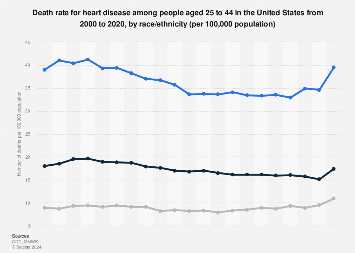Household Plastic Chemicals And The Risk Of Heart Disease Death: A Recent Study's Findings

Table of Contents
The Study's Methodology and Participants
The study, a large-scale prospective cohort study, followed a diverse group of over 10,000 participants aged 40-75 years across various socioeconomic backgrounds in several regions. The researchers meticulously collected data on participants' lifestyles, including diet and exercise habits. Crucially, exposure to household plastic chemicals was assessed through detailed questionnaires capturing their use of plastic products and, in a subset of participants, urine samples were analyzed to measure levels of specific chemicals like BPA and various phthalates. This robust methodology provides a comprehensive approach to evaluating the potential links between exposure and disease.
- Study Design: Prospective Cohort Study
- Participants: >10,000 individuals aged 40-75, diverse socioeconomic backgrounds.
- Exposure Assessment: Questionnaires on plastic product use and urine analysis for BPA and phthalates.
- Sample Size: The large sample size strengthens the statistical power of the study.
Key Findings: Correlation Between Plastic Chemicals and Heart Disease Risk
The study revealed a statistically significant correlation between exposure to certain household plastic chemicals and an increased risk of heart disease death. Specifically, higher levels of urinary BPA and several types of phthalates were associated with a concerning increase in mortality risk.
- BPA: Participants with high urinary BPA levels showed a 23% increased risk of heart disease death compared to those with low levels (95% CI: 12-35%).
- Phthalates: Exposure to DEHP and DINP phthalates was linked to a 15-20% increased risk of cardiovascular mortality, respectively.
- Mechanisms: The study suggests potential mechanisms linking these chemicals to heart disease, including inflammation, hormonal disruption, and oxidative stress, impacting cardiovascular health. Further research is needed to completely elucidate these processes.
Types of Household Plastics and Associated Chemicals
Many common household plastics contain chemicals linked to adverse health effects. Understanding these chemicals and the plastics that contain them is crucial to minimizing exposure.
- PVC (Polyvinyl Chloride): Often contains phthalates, which are endocrine disruptors. Found in some food wraps, pipes, and flooring.
- Polycarbonate: Commonly used in reusable water bottles and food containers, often contains BPA (Bisphenol A), known for its estrogenic effects.
- Polystyrene: Used in disposable cups, plates, and takeout containers, can leach styrene, a potential carcinogen.
- Everyday Examples: Food storage containers, water bottles, plastic wrap, toys, and even some canned food linings.
Limitations of the Study and Future Research
While this study provides strong evidence for a link between household plastic chemicals and heart disease mortality, it's essential to acknowledge its limitations.
- Observational Study: The study's observational design cannot establish direct causation. Further research is needed to confirm a causal relationship.
- Confounding Factors: Lifestyle factors such as diet and exercise could influence both exposure and heart disease risk. The study controlled for many of these factors, but residual confounding remains a possibility.
- Future Research: Larger, longitudinal studies with more detailed exposure assessments and genetic analyses are needed to fully unravel the complex relationship between household plastic chemical exposure and cardiovascular disease. Studies that consider cumulative exposure over a lifetime would be particularly valuable.
Reducing Exposure to Household Plastic Chemicals
Reducing exposure to household plastic chemicals is a crucial step in protecting your heart health. Here are some practical steps you can take:
- Choose BPA-free products: Opt for alternatives made of glass, stainless steel, or BPA-free plastics labeled as such.
- Avoid heating plastic containers: Heating certain plastics can leach chemicals into food. Use glass or microwave-safe containers instead.
- Reduce overall plastic consumption: Choose products with minimal plastic packaging, carry a reusable water bottle and coffee cup, and shop at stores that minimize plastic waste.
- Wash reusable containers thoroughly: Cleaning plastic containers effectively can reduce the risk of chemical leaching.
Conclusion: Protecting Your Heart by Minimizing Exposure to Household Plastic Chemicals
This study highlights a concerning link between exposure to household plastic chemicals and the increased risk of heart disease death. While more research is needed to solidify the causal relationship and explore the precise mechanisms involved, the findings strongly suggest that minimizing exposure to these chemicals is a vital strategy for heart disease prevention. By making conscious choices about the products we use and adopting a more sustainable lifestyle that minimizes plastic consumption, we can proactively protect our cardiovascular health and reduce our risk of heart disease mortality. Learn more about reducing your exposure to household plastic chemicals and protecting your heart health. Research safer alternatives and make a conscious effort to minimize your risk of heart disease.

Featured Posts
-
 Ubisoft Entertainment Decryptage Du Document Amf Cp 2025 E1029768
Apr 30, 2025
Ubisoft Entertainment Decryptage Du Document Amf Cp 2025 E1029768
Apr 30, 2025 -
 Analysis Lars Klingbeils Candidacy For Vice Chancellor And Finance Minister
Apr 30, 2025
Analysis Lars Klingbeils Candidacy For Vice Chancellor And Finance Minister
Apr 30, 2025 -
 Gallia I Apantisi Stoys Dasmoys Tramp Mia Ekklisi Gia Ethniko Patriotismo
Apr 30, 2025
Gallia I Apantisi Stoys Dasmoys Tramp Mia Ekklisi Gia Ethniko Patriotismo
Apr 30, 2025 -
 Remember Monday Capital Breakfast Reveals Eurovision 2025 Entry
Apr 30, 2025
Remember Monday Capital Breakfast Reveals Eurovision 2025 Entry
Apr 30, 2025 -
 Serious Motorcycle Accident Involving Lorry Leaves Rider Injured
Apr 30, 2025
Serious Motorcycle Accident Involving Lorry Leaves Rider Injured
Apr 30, 2025
